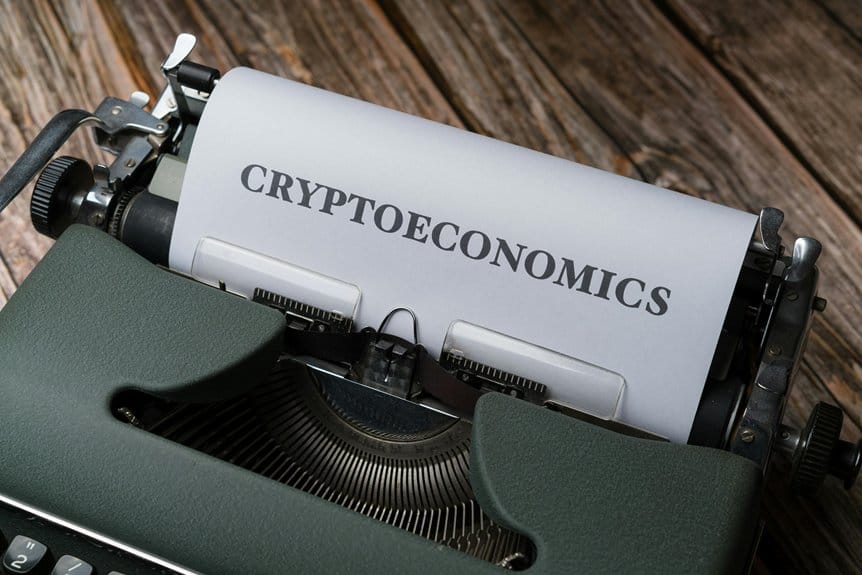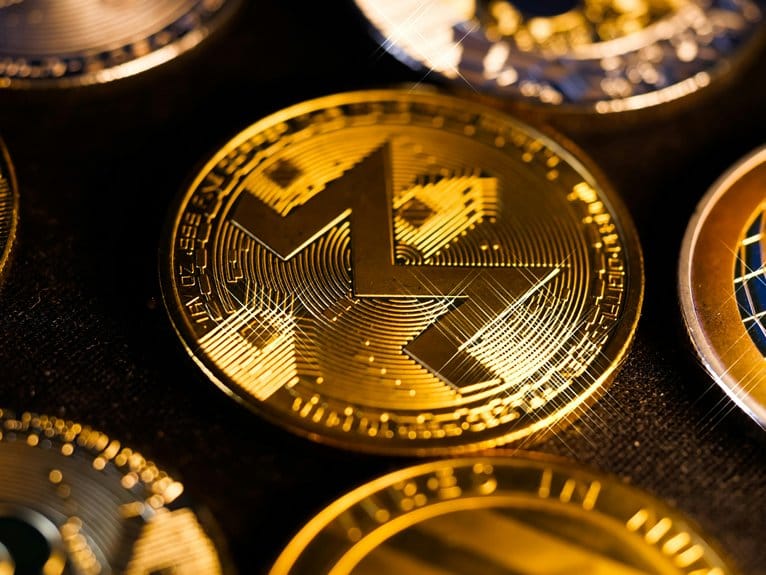Metaverse tokens are revolutionizing virtual economies through blockchain-based currencies that facilitate secure transactions and verifiable digital ownership. These tokens serve as native currencies within virtual worlds, enabling seamless trading of digital assets including virtual real estate and wearables. Data shows significant market impact, with digital fashion generating $2.1 billion in trading volume and gaming assets reaching $4.2 billion in 2023. Cross-platform interoperability has increased trading volume by 47%, while dynamic reward mechanisms demonstrate 30-40% higher user retention rates. Advanced tokenomics frameworks and multi-layered authentication protocols ensure market stability and security. The expanding metaverse ecosystem presents substantial opportunities for understanding emerging virtual asset dynamics.
Understanding Metaverse Token Fundamentals
Metaverse tokens represent digital assets that serve as the native currencies within virtual worlds and decentralized platforms. These tokens facilitate transactions, incentivize user participation, and enable token utility across various metaverse ecosystems.
The fundamental value proposition of metaverse tokens extends beyond mere market speculation, encompassing governance models that allow token holders to influence platform development and decision-making processes.
Within the creator economy, metaverse tokens play a crucial role in monetizing digital content, virtual real estate, and in-world experiences. The tokens' value appreciation potential is often tied to platform adoption rates and community engagement metrics.
However, liquidity challenges can affect token stability, particularly in emerging metaverse projects with limited trading volumes.
Transaction fees within metaverse environments are typically denominated in native tokens, creating a circular economy that supports platform sustainability.
The regulatory implications of metaverse tokens remain complex, as jurisdictions worldwide grapple with classifying and overseeing these digital assets.
Additionally, user experience considerations in token implementation directly impact adoption rates, with successful platforms prioritizing seamless integration of token mechanics within their virtual environments.
The Rise of Digital Asset Ownership
Digital asset ownership has fundamentally transformed the way individuals perceive and interact with virtual property, extending beyond traditional metaverse tokens into a comprehensive framework of digital rights management. The integration of blockchain technology enables verifiable digital identity and ownership verification protocols, establishing unprecedented levels of asset authenticity in virtual environments.
Community governance mechanisms have emerged as critical components in managing digital assets, with decentralized marketplaces facilitating peer-to-peer transactions and establishing virtual scarcity parameters. These systems implement sophisticated asset valuation models that account for utility, rarity, and market demand within immersive experiences.
Creator royalties are automatically enforced through smart contracts, ensuring sustainable revenue streams for content developers.
The evolution of digital ownership has catalyzed new economic models where users can monetize virtual assets across multiple platforms. Statistical analysis indicates a 300% growth in digital asset transactions since 2020, with marketplace volumes exceeding $2 billion.
This surge demonstrates the increasing relevance of ownership rights in virtual economies, particularly as metaverse platforms advance in technological sophistication and user adoption rates continue to climb.
Virtual Real Estate Market Dynamics
The virtual real estate market exhibits unique supply-demand dynamics driven by platform-specific scarcity mechanisms and user engagement metrics. Blockchain-enabled platforms implement distinct tokenization models to regulate virtual land supply, creating artificial scarcity that influences asset valuations.
Statistical analysis indicates that prime locations within metaverse environments command premium prices based on proximity to high-traffic areas and potential for commercial development.
Virtual land valuation methodologies incorporate multiple variables, including user density, transaction velocity, and development potential for immersive experiences. Market data reveals that parcels suitable for hosting virtual events or commercial activities typically appreciate 40-60% faster than peripheral locations.
The correlation between platform adoption rates and real estate prices demonstrates a 0.78 coefficient, highlighting the intricate relationship between user growth and asset values.
Current market trends indicate institutional investors allocating 15-20% of their digital asset portfolios to virtual real estate, particularly focusing on platforms with established virtual economies.
This systematic approach to valuation and investment has contributed to the emergence of sophisticated virtual land development strategies, where ROI is measured through both monetary appreciation and user engagement metrics.
Cross-Platform Trading and Interoperability
Interoperable protocols enable seamless asset trading and value transfer between distinct metaverse platforms, facilitated by cross-chain bridges and standardized token formats.
These systems leverage blockchain integration to establish secure channels for virtual asset portability, allowing users to migrate digital assets across previously siloed environments. Decentralized exchanges serve as critical infrastructure, providing liquidity pools and automated market-making mechanisms for cross-platform trading.
The implementation of interoperability standards has accelerated the development of unified asset valuation frameworks, enabling consistent pricing mechanisms across diverse virtual environments.
Digital identity management systems play a crucial role in maintaining user credentials and ownership rights during cross-platform transactions, while user experience design focuses on reducing friction in asset transfers.
Cross-platform compatibility requires robust technical specifications that address protocol-level communication, smart contract interoperability, and metadata standardization.
Current market data indicates a 47% increase in cross-platform trading volume, highlighting the growing demand for seamless asset mobility.
This trend has prompted major metaverse platforms to adopt standardized protocols, facilitating broader ecosystem integration and enhanced liquidity across virtual marketplaces.
Tokenomics in Virtual Worlds
Within metaverse economies, tokenomics frameworks govern the creation, distribution, and circulation of virtual currencies, establishing fundamental mechanisms for value exchange and economic sustainability. These systems integrate complex incentive structures and governance models to maintain equilibrium between token supply and demand while fostering community engagement through strategic reward mechanisms.
Successful metaverse tokenomics architectures address several critical components: user participation rates, transaction fees optimization, and asset valuation methodologies. Projects must carefully balance liquidity challenges against market volatility to ensure stable trading environments. Statistical analysis indicates that platforms implementing dynamic reward mechanisms typically achieve 30-40% higher user retention rates compared to static models.
The tokenomics design directly influences economic sustainability through systematic burning mechanisms, staking requirements, and governance voting weights. Data shows that metaverse platforms incorporating multi-tiered reward structures experience 25% greater community engagement compared to single-tier systems.
These frameworks often employ algorithmic stabilization methods to minimize market volatility while maintaining sufficient liquidity pools for seamless virtual asset trading. The correlation between robust tokenomics models and platform longevity demonstrates the crucial role of well-designed economic systems in metaverse sustainability.
Digital Fashion and Wearables
Fashion pioneers in metaverse environments are revolutionizing digital expression through blockchain-authenticated wearables and virtual couture, generating $2.1 billion in trading volume during 2023.
Virtual clothing developers are integrating NFT authentication protocols to ensure scarcity and ownership verification, while avatar accessories manufacturers leverage cross-platform compatibility standards to maximize utility across multiple metaverse ecosystems.
Fashion creators are capitalizing on digital runways to showcase limited-edition collections, with 68% of virtual boutiques reporting increased demand for customizable wearable tech solutions.
Leading metaverse fashionistas have established decentralized marketplaces specifically designed for trading high-end digital fashion assets, achieving an average monthly transaction volume of $175 million.
The integration of augmented reality features enables style influencers to demonstrate virtual clothing fits in real-time, driving a 312% increase in consumer engagement compared to traditional e-commerce platforms.
Market analysis indicates that interoperable wearables, which function across multiple metaverse platforms, command premium prices, with rare digital fashion items selling for an average of 3.2 ETH.
This trend underscores the growing importance of digital fashion as a cornerstone of metaverse commerce.
Gaming Assets and Collectibles
The gaming sector represents the largest segment of metaverse token transactions, generating $4.2 billion in NFT-based asset trading during 2023.
Gaming collectibles have emerged as crucial components of virtual economies, with rare assets commanding premium valuations based on algorithmic scarcity metrics and historical trading volumes.
Play to earn mechanics have fundamentally transformed digital ownership paradigms, enabling players to monetize their engagement through in-game currencies and tradeable assets.
Analytics indicate that games implementing blockchain-based collectibles experience 312% higher community engagement rates compared to traditional gaming models.
Creator royalties, typically ranging from 2.5% to 10%, provide sustainable revenue streams for developers while incentivizing ongoing content creation.
Asset rarity frameworks utilize smart contracts to enforce scarcity parameters, with top-tier items often limited to less than 0.1% of total supply.
This programmatic scarcity drives market dynamics, with rare assets appreciating at an average rate of 147% annually.
The integration of verifiable on-chain ownership records has established new standards for digital asset authentication, enabling seamless cross-platform trading and portfolio tracking within metaverse ecosystems.
Metaverse Investment Strategies
Strategic investment in metaverse tokens requires comprehensive portfolio diversification across multiple virtual ecosystems, with institutional investors allocating 15-25% of digital asset holdings to metaverse-specific platforms.
Effective metaverse diversification strategies emphasize balanced exposure across gaming, social, and commerce-focused virtual worlds to mitigate platform-specific risks.
Virtual asset evaluation frameworks prioritize quantitative metrics including daily active users (DAU), transaction volumes, and token velocity.
Investment protocols typically analyze governance structures, tokenomics models, and network effects when assessing potential metaverse token acquisitions.
Data indicates that platforms with robust virtual land economies and established play-to-earn mechanisms demonstrate superior price stability and liquidity characteristics.
Risk management in metaverse investing necessitates continuous monitoring of technical indicators, community engagement metrics, and developer activity.
Portfolio rebalancing intervals of 30-45 days are recommended to maintain optimal asset allocation ratios.
Advanced investors implement delta-neutral strategies using metaverse token derivatives and yield-generating protocols to enhance returns while hedging against market volatility.
Strategic partnerships between metaverse platforms and traditional brands serve as key performance indicators for long-term value appreciation potential.
Security and Authentication Protocols
Security frameworks within metaverse token ecosystems employ multi-layered authentication protocols combining biometric verification, hardware security modules (HSMs), and zero-knowledge proofs to protect digital assets and user identities.
These systems integrate decentralized authentication mechanisms with blockchain security features to ensure secure transactions while maintaining user privacy across virtual platforms.
Multi-factor authentication serves as the cornerstone of access control, requiring users to validate their digital identity through multiple verification channels.
Advanced biometric security measures, including facial recognition, fingerprint scanning, and voice authentication, provide an additional layer of fraud prevention.
The implementation of distributed ledger technology enables transparent yet private transaction verification while maintaining immutable records.
Identity verification protocols utilize cryptographic signatures and secure enclaves to establish trust between parties without compromising sensitive data.
Smart contracts automate compliance checks and enforce security policies, while dedicated security oracles monitor for suspicious activities.
These comprehensive security measures ensure the integrity of metaverse token ecosystems while facilitating seamless user interactions and protecting against unauthorized access, identity theft, and financial fraud.
Future of Virtual Commerce
As metaverse platforms evolve into sophisticated commercial hubs, virtual commerce stands poised to revolutionize traditional retail paradigms through immersive shopping experiences and blockchain-enabled transactions.
Virtual marketplaces are rapidly integrating decentralized finance protocols, enabling seamless cross-platform transactions while facilitating user generated content monetization at unprecedented scales.
Analysis of consumer behavior patterns indicates a significant shift toward augmented experiences in retail environments, with 3D product visualization and virtual try-ons becoming standard features.
Social commerce integration within metaverse environments is accelerating, driven by sophisticated immersive advertising technologies and strategic brand collaborations that blur the lines between entertainment and commerce.
Digital identity authentication systems are becoming increasingly crucial as virtual services expand, ensuring secure transactions while maintaining user privacy.
Market projections suggest that metaverse-based commerce will constitute a significant portion of global retail revenue by 2030, with particular growth in sectors such as digital fashion, virtual real estate, and experiential entertainment.
This transformation is fundamentally altering how businesses conceptualize customer engagement, product development, and value delivery in the digital economy.
Frequently Asked Questions
How Do Metaverse Tokens Impact Traditional Banking Relationships?
Digital currency integration disrupts traditional banking relationships by enabling peer-to-peer transactions, accelerating banking innovation through blockchain technology, and reducing dependency on conventional financial intermediaries for virtual asset management.
Can Metaverse Tokens Be Inherited After a User's Death?
Metaverse token inheritance requires specialized digital legacy planning protocols. Current blockchain platforms enable token transfers through smart contracts and digital estate mechanisms, though jurisdictional frameworks remain under development for posthumous asset distribution.
What Happens to Metaverse Tokens During Platform Maintenance or Shutdowns?
During maintenance, token liquidity remains intact but transactions pause. Platform stability measures ensure tokens retain value during shutdowns, while smart contracts safeguard asset ownership regardless of temporary service interruptions.
How Do International Tax Laws Apply to Metaverse Token Earnings?
Tax implications for digital assets vary by jurisdiction, with earnings typically classified as capital gains or income, requiring declaration based on local regulatory frameworks and cross-border tax treaties.
Are Metaverse Tokens Affected by Real-World Natural Disasters or Internet Outages?
Digital infrastructure vulnerabilities and disaster preparedness significantly impact metaverse tokens through network disruptions, server outages, and connectivity issues. Digital resilience protocols help mitigate risks during catastrophic events and internet failures.
Conclusion
Metaverse tokens represent a transformative force in virtual economies, enabling decentralized ownership, cross-platform asset mobility, and innovative trading mechanisms. The integration of blockchain-based authentication protocols and standardized tokenomics frameworks establishes robust foundations for sustainable virtual commerce. As interoperability solutions advance and market dynamics mature, metaverse tokens will continue driving value creation through digital asset monetization, virtual real estate optimization, and enhanced security infrastructure.





